National historical and cultural relic - Ngoc Tri Communal House
(BNP) - Ngoc Tri communal house, Binh Dinh commune, Luong Tai district, was built during the reign of Le Trung Hung (18th century) on a large scale and strong ironwood frame.

Ngoc Tri communal house.
During the resistance war against the French, the communal house was destroyed. After peace was restored, the people restored it to worship the Saint on a small scale. Around 1990, the local people rebuilt it according to the traditional architecture of Chinese “Dinh” letter including 3 compartments, 2 lean-stones and 2-compartment “Hậu Cung” (Emperor’s Harem) with strong wooden frame. In 2008, the local people built an additional “tòa tiền tế” (front ceremonial hall) with a curved blade and a frame entirely made of wood.
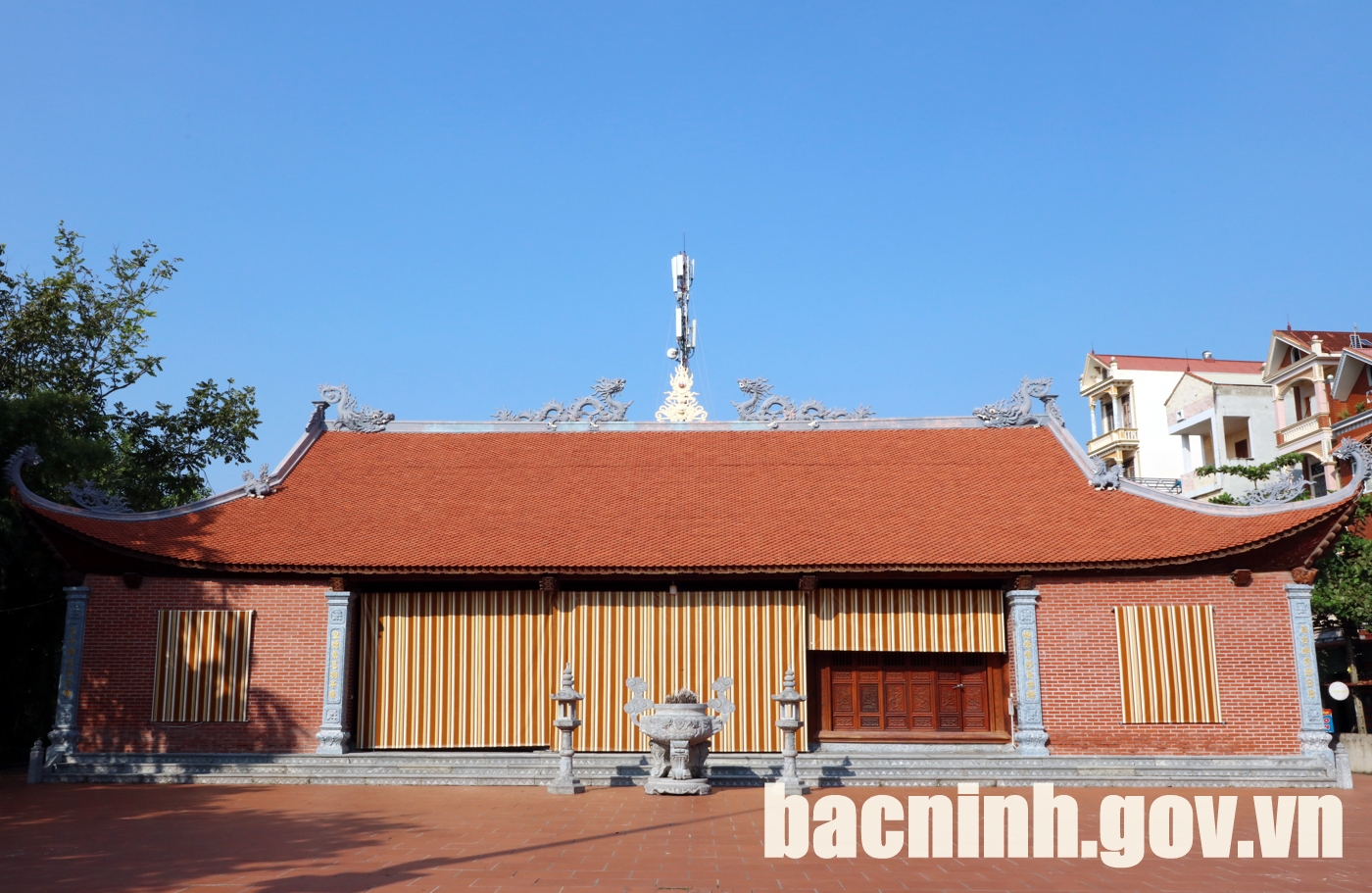
Great communal hall.

The roof is covered with two dragons worshiping the sun.

4 curved blades.
Ngoc Tri communal house is currently an architectural work restored by the people after the war, following the traditional architecture style. Artistically stylized patterns, flowers and leaves are carved in details. Worshipping objects, ordinations, “hoành phi” (horizontal lacquered boards), and couplets are typical products of the artistic style from each period in history.

Main altar in the front ceremonial hall.
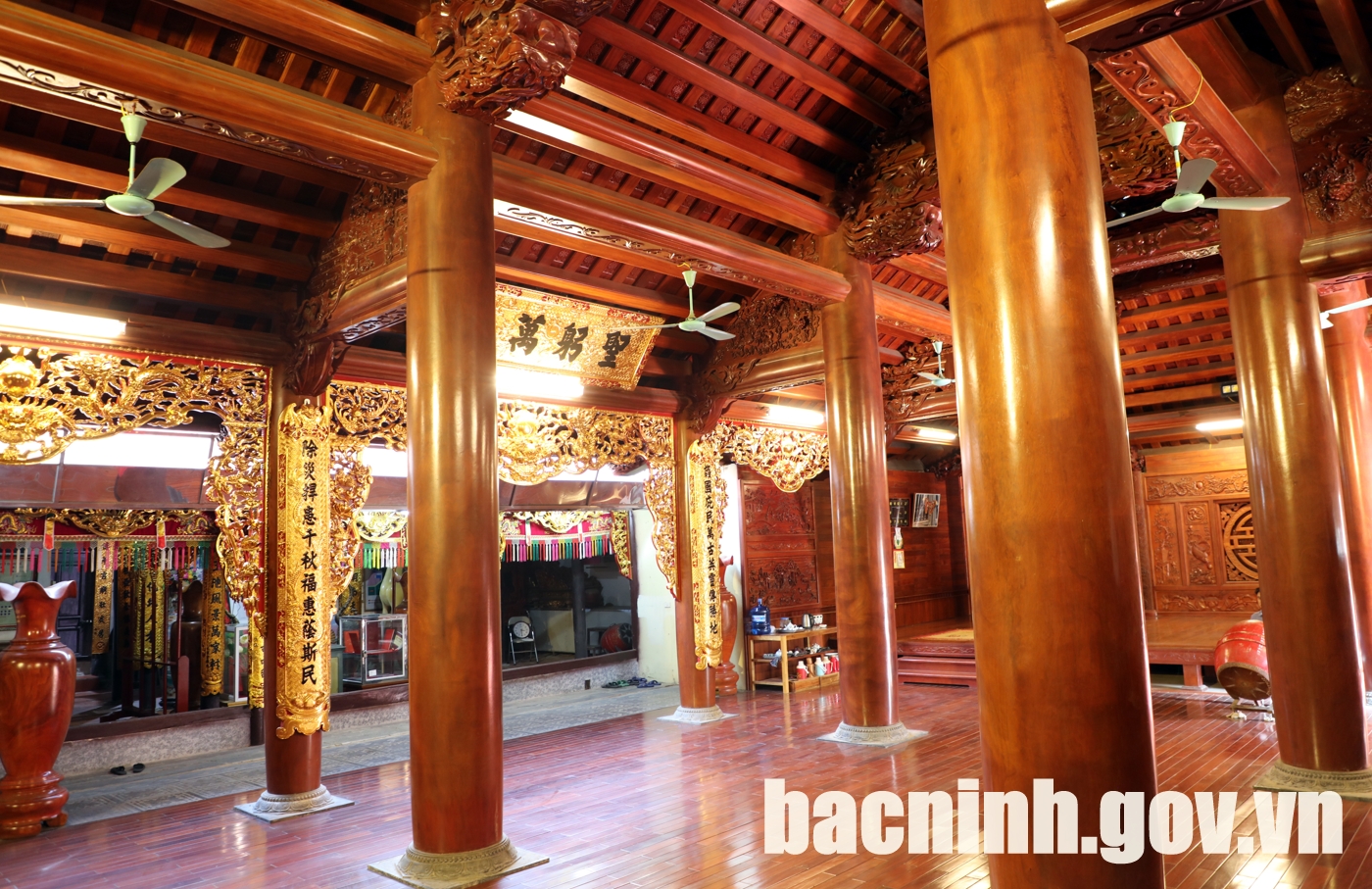
The load-bearing frame is made of wood.

The door is open to 3 compartments.
Ngoc Tri communal house has an architecture including the front ceremonial hall of 3 compartments, 2 lean-stones, 4 curved blades and an open door to 3 middle compartments. The load-bearing frame is made of wood.

The emperor’s harem worships La Nam De.


The great communal hall has an architecture of Chinese “Dinh” letter including 3 compartments, 2 lean-stones and 2-compartment emperor’s harem. The frame is linked by 06 rows of horizontal columns and 04 rows of vertical columns.
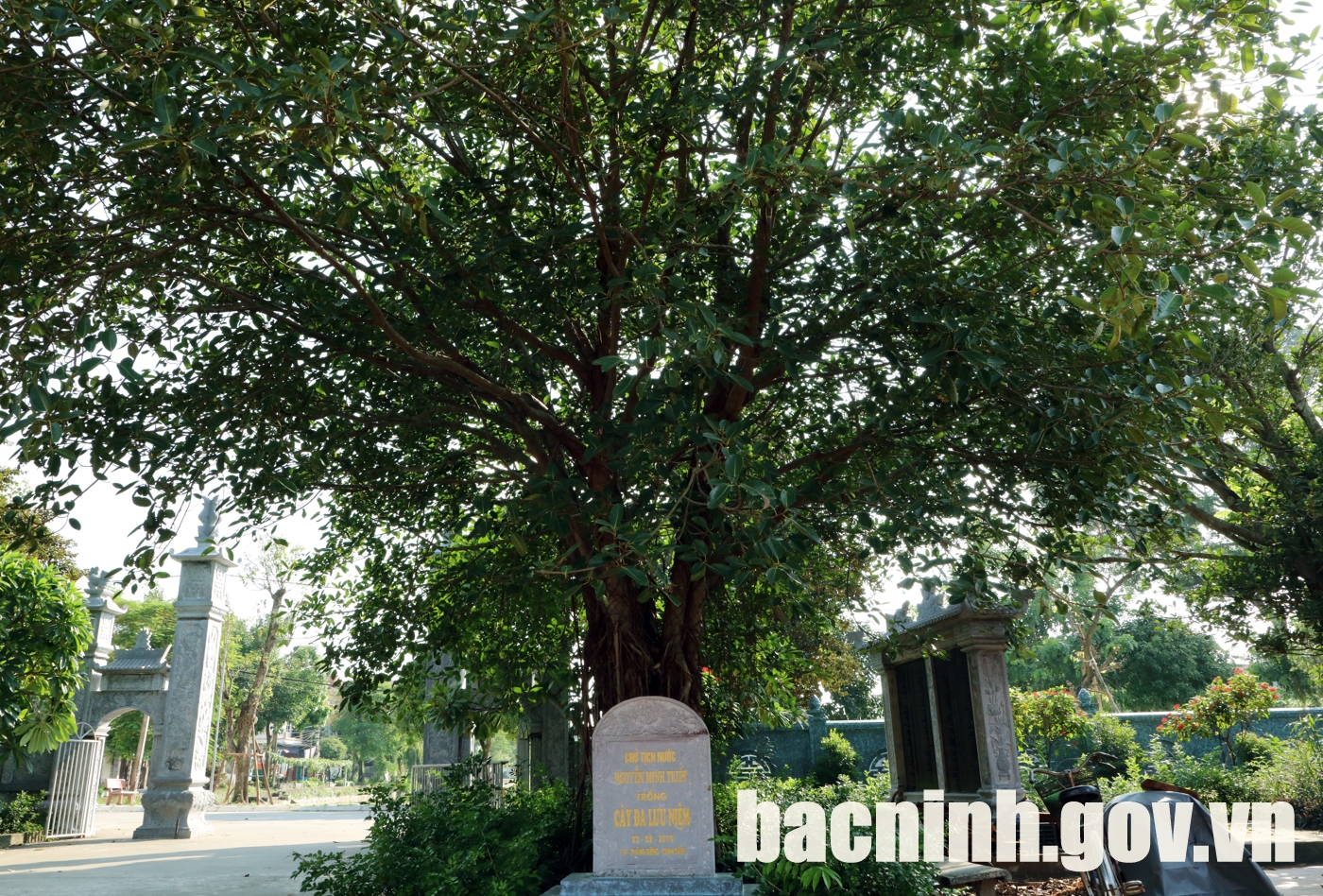
The banyan tree planted by President Nguyen Minh Triet at the grounds.

Altar of heroic martyrs and homeless people at the communal house.
Ngoc Tri communal house worships La Nam De aka Chang Lang, who is a son of Lac Long Quan.

Set of eight treasures.
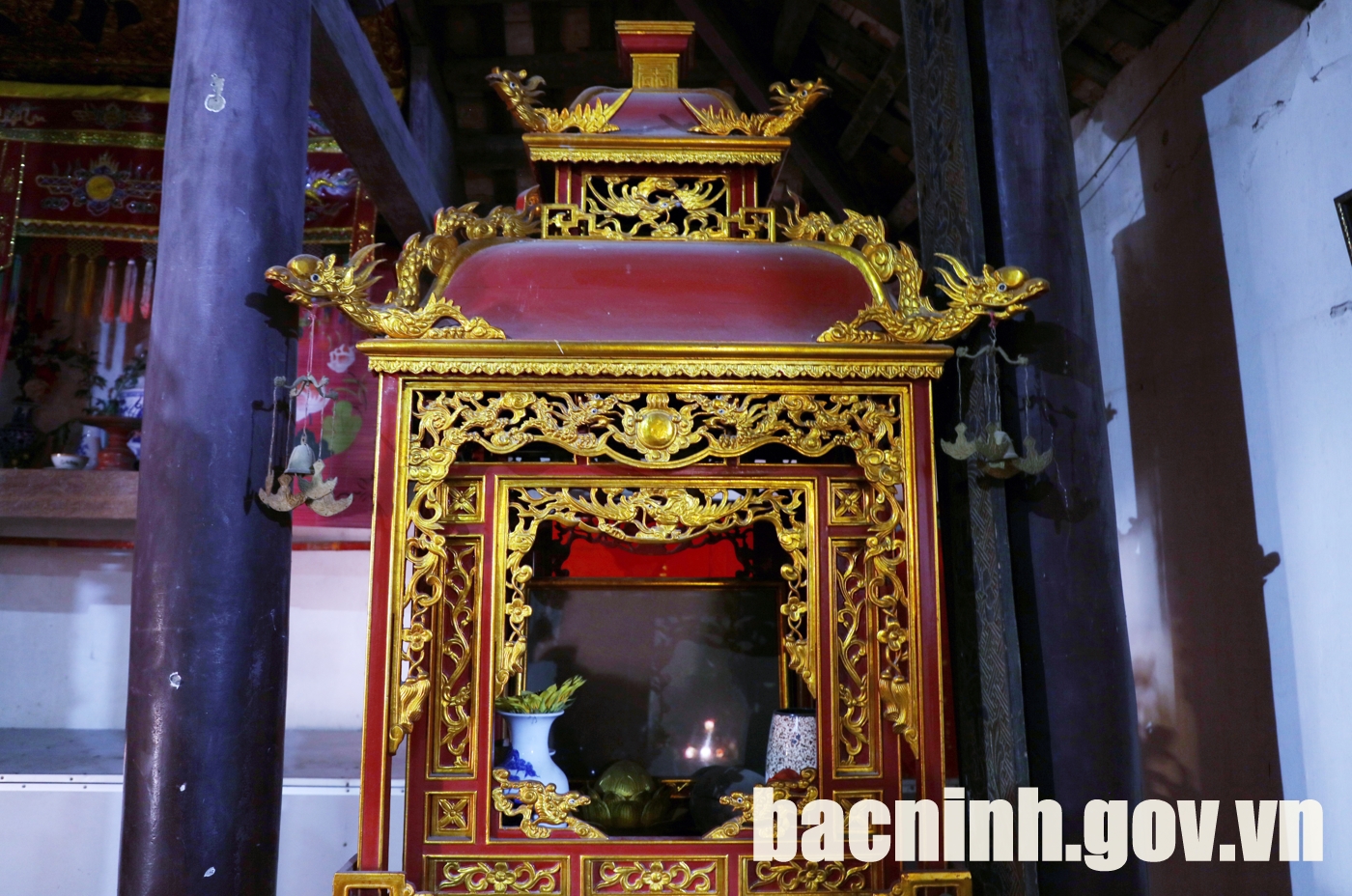
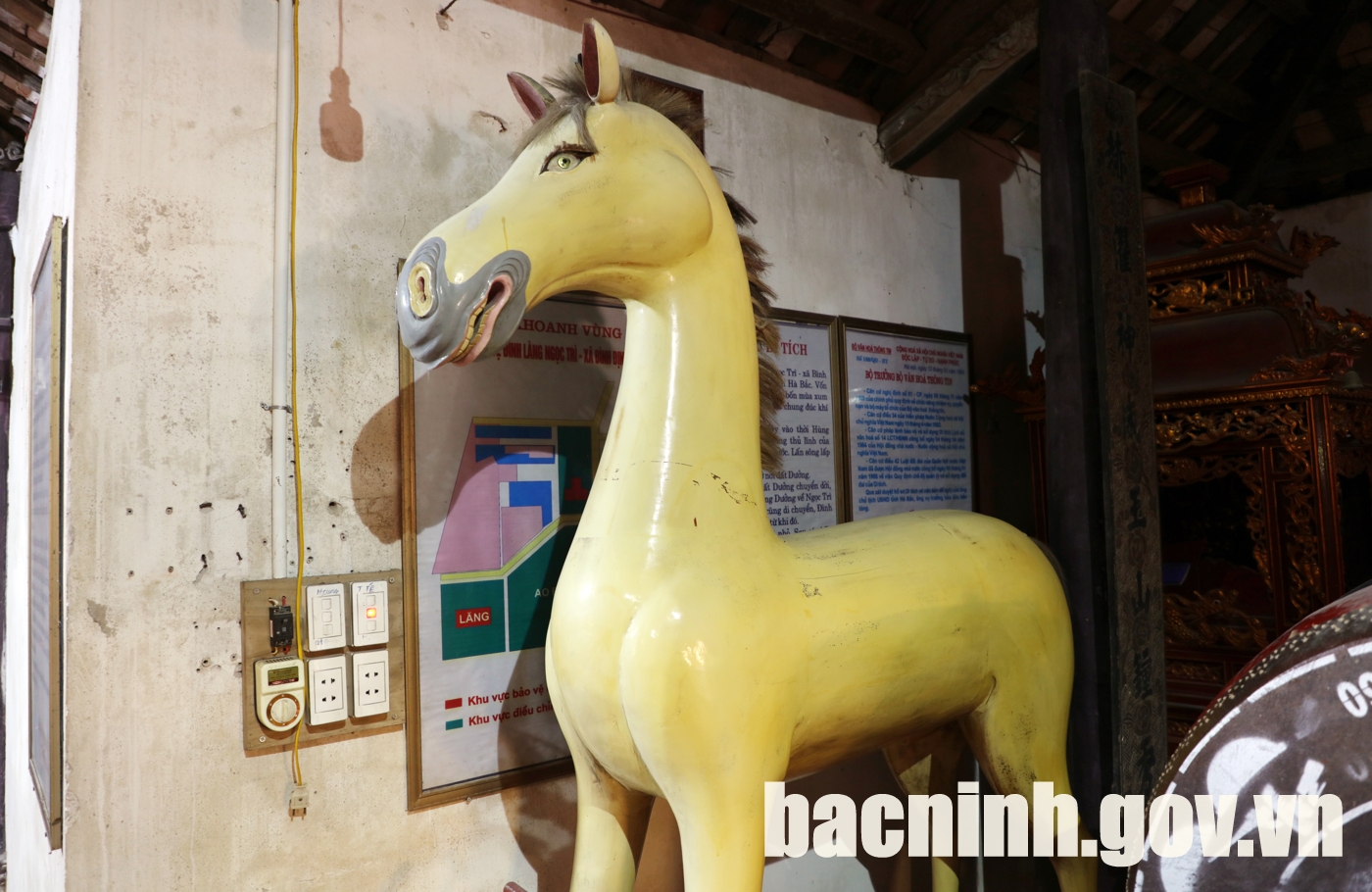
White horse at the communal house.
The remaining artifacts in the communal house are quite diverse including: 3 stone steles of the Nguyen Dynasty: “Danh truyền bất hủ”, “Thanh phong tắc như”, “Cao sơn ngưỡng chỉ”; 01 Chinese legend written by Nguyen Binh in 1572; 08 ordinations awarded by generations of kings. Worshipping objects such as horizontal lacquered boards, couplets, vases, incense burners, bronze bells, boxes, and betel boxes were the products of sculptural art during the Nguyen Dynasty.

Ngoc Tri communal house was ranked as National historical and cultural relic in Decision no. 188-QD/BT dated February 13, 1995 of the Ministry of Culture and Information.






